Camellia Tree | Ultimate Bonsai Care Guide
Here's what you'll find in our Coral bark
Japanese maple bonsai species guide:
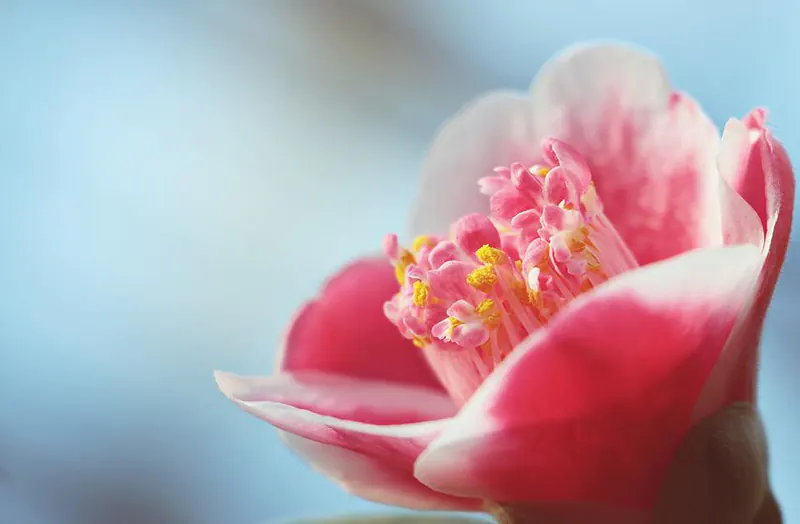
Quick Info Sheet for the Camellia Tree
🌞 – Semi-shaded areas in summer, frost protection in winter
💦 – Plenty of water in warm seasons, with less in winter
🍏 – Specific acid feed made for the Camellia tree
✂️ – Hard pruning after flowering in spring
🎍- Repot every two to three years, depending on root development
🐛 – Scale, vine weevil, mealy bugs, petal blight, leaf gall, canker, root rot, mottle leaf virus
🥜 – Seeds, cuttings, air layering propagation
🏠 – Top uses are tea
Camellia Tree Scientific Classification
- Clade: Angiosperms
- Clade: Eudicots
- Clade: Asterids (Asters)
- Order: Ericales (Heath)
- Family: Theaceae (Tea)
- Genus: Camellia (Camellia)

Information on the Camellia Tree
The Camellia tree genus is one of the most widespread genera in Asia, with distribution across southern and eastern Asia, Indonesia, Japan, and Indonesia. While there’s some debate about the exact number, there are about 300 species in the genus. Plenty of them are grown as bonsai trees due to the beautiful rose-like flowers, especially Camellia japonica.
Georg Kamel was a botanist that lived and worked in the Philippines. After he described a plant as a Camellia, Linnaeus used it as part of the classification. Many Camellia species are beneficial as teas for the south Asian and Indian countries, being an essential economic component.
Camellia trees are evergreen, albeit some are small enough to be described as shrubs. While it already has so many species, some of the species have multiple cultivars. That’s what makes the Camellia such a stunning genus, as it has a massive variety of trees and uses.
What the Camellia Tree Looks Like
It’s challenging to give a clear identification for an entire genus as diverse as the Camellia with so many trees under it. Many species have different colors, shapes, and sizes, which means we can only produce an overview that broadly covers all of them. Still, these elements should help you determine what type of Camellia tree you have.
Leaves
In general, the Camellia tree has leaves arranged alternately on the branch, with serrated edges and smooth surfaces. The evergreen leaves remain green throughout the year, and the top surface is glossy and dark in hue.
Flowers
While the leaves look stunning on the Camellia tree, it’s not what steals the show. The flowers are huge and gorgeous, resembling roses in some species. Depending on the variant, you’ll generally find between five to nine petals with a wide variety of colors. Some of the more common ones are pink, red, white, and yellow.
The Camellias that are used in teas usually have white flowers. The stamens are large and yellow, and they contrast well with the surrounding petals. This feature gives the Camellia tree its beautiful appearance, especially as a bonsai.
Fruit/Seed
The fruit of the Camellia tree is a dry pod that contains about five compartments. Each of these sections holds up to eight seeds, depending on the species. That means you can usually get about 40 seeds per fruit when it matures, giving you plenty of propagation opportunities.
When the flowers bloom, the stamen release pollen that attracts bees, butterflies, other flying insects, and birds. It’s usually the bees that carry the pollen grains to the pistils of other flowers, which facilitates pollination and helps to produce seeds. The seed has a hard, brown shell with a spot that looks like an eye on one side.
Image source
Different Camellia Tree Varieties
Placing all 300 Camellia tree species and the other variants on one page is a job we’re not well suited for and do not intend on doing. That’s something that Wikipedia is more equipped to handle. As far as the scope of this article is concerned, we’ll cover some of the more popular species you’ll find as bonsais with their most outstanding traits:
- C. japonica: by far my favorite, the Japanese Camellia is a stunning tree with dark green leaves and large, bright flowers. Usually, they’ll bloom in white, pink, or red colors. The tree loves to flower in winter, but you’ll have plenty of foliage in spring and summer to contend with on your bonsais.
- C. reticulata: these flowers are lighter in color, but you’ll have massive petals to draw in the bees and wildlife. The petals are also slightly ruffled, which makes a splendid appearance on bonsais. Some popular variants are Dream Girl, Citation, and Miss Tulare.
- C. sasanqua: The petals on this Camellia tree can be ruffled, plain, or puffed up, depending on the variant. The gold stamens will attract butterflies and bees, and give a sharp contrast to the petals. The top variants for bonsais are Crimson King, Jennifer Susan, and Sparkling Burgundy.
- C. granthamiana: massive single white flowers that hold clusters of gold stamens during the autumn period
- C. lutchuensis: it has a strong fragrance that you’ll love, and there are small white flowers all over the foliage during the wintertime
- C. rosaeflora: you’ll also find the winter favorable with small pink flowers covering the foliage
- C. nitidissima: you’ll see gold-yellow flowers with detailed veining on the light green leaves that’s hard to miss
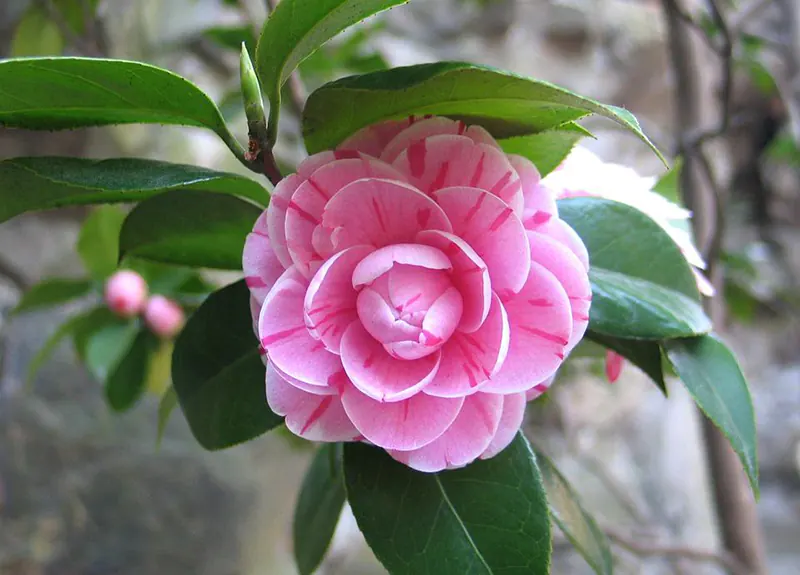
Caring for your Camellia Tree Bonsai
Now that I’ve teased and excited you about the Camellia tree, it’s time for me to share how to care for it as a bonsai. Many of these apply to trees in your garden too, but you’ll have to take more care when it’s in a pot. There are rules for when to prune so you can have a stunning bloom in the winter or spring.
Where to place your Camellia Tree for optimal sunlight
While the Camellia tree loves sunlight for optimal growth, your bonsai will prefer some shade in the middle of the afternoon. The leaves don’t like the heat of the sun during summer at peak times, but you shouldn’t place them in complete shade either. It needs light to process the food into energy.
The best solution is to place it in an area that receives sunlight for the first few hours of the day. Even semi-shade conditions work fine, as long as it receives the light. If you have your Camellia bonsai trees outside, you can create a shade overhead to protect it from the afternoon sun.
Watering and humidity requirements
The Camellia is a tree that loves drinking as much water as possible. Throughout the warmer months, you can expect to water it daily, even twice a day on the hottest days. The trick is to feel if the soil is dry and then water if it is. On the flip side, you don’t want the roots drowning in soggy soil, as that will lead to root rot.
In the winter, you’ll still have to keep watering when needed. Some species bloom in winter, so it will still be thirsty. However, keep an eye out for frost or too little drainage, as it might kill your bonsai. You can use a tray to see how much water it needs in winter. Also, keep the humidity levels high throughout the year, especially in dry climates.
Fertilizing and feeding your Camellia Tree
Since Camellia trees love acidic soil, you can’t simply use any fertilizer to feed them. Also, it has other special requirements. Just like hydrangeas, the Camellia needs a special mixture of food that you can ask for at your local store. If you say the species name, they’ll know exactly what type you need.
If you want to use general fertilizer, you still need to make sure it has high acidic content. You can apply the liquid version with your water on a weekly basis during the growing season, whether it’s spring, summer, or winter. Solid fertilizers also work well, as they’ll last a few months before you need to reapply. The only time you shouldn’t feed the Camellia tree is when it’s flowering.
Pruning and shaping
The timing for pruning your Camellia bonsai tree can be tricky. Once again, it falls down to when your tree has stopped flowering, which can be anywhere between summer and winter. As soon as you see the last of the flowers fall off, you can get to work trimming your tree.
The best approach is cutting back branches until there are only two leaves left. It encourages ramification on your tree with dense foliage. Of course, it also depends on the style you’ve chosen. If a branch is too long or out of place, you may want to remove it completely.
Also, keep a lookout for buds or shoots appearing lowering on the trunk or on spots you don’t want them to grow. It’s best to remove these whenever you see them and not wait until a later time. It won’t affect the flowering, as it hasn’t developed far enough as yet.
As for wiring, you can use bonsai wires to shape the Camellia tree, as long as you make sure the wires don’t dig into the bark. For a safer technique, we recommend you try the clip-and-grow method mentioned above. You can decide where you want branches to appear and in which direction you want them to grow by constantly cutting back to two leaves.
How to repot your Camellia Tree
There will come a time when you’ll need to repot your Camellia bonsai tree. The reason is that the roots will outgrow the soil you provide in the container, and there will be no space to breathe. If you see roots protruding out the bottom or smothering the soil, it’s time to transplant your small tree.
The best time to do so is in early spring or just after the flowering period when your tree will rest for a month or so. Clean and remove the soil from the roots, and only trim the roots slightly. You can soak the roots in water for 30 mins if you want to clean them from the old soil completely.
While it’s soaking, you can prepare the new bonsai soil in the container. If you want more space for the roots you can buy a bigger bonsai pot. Make sure the acidic levels are slightly high and that there’s no lime in the soil. When ready, place your Camellia tree in the new soil. You can tie down the roots via the drainage holes if you need to.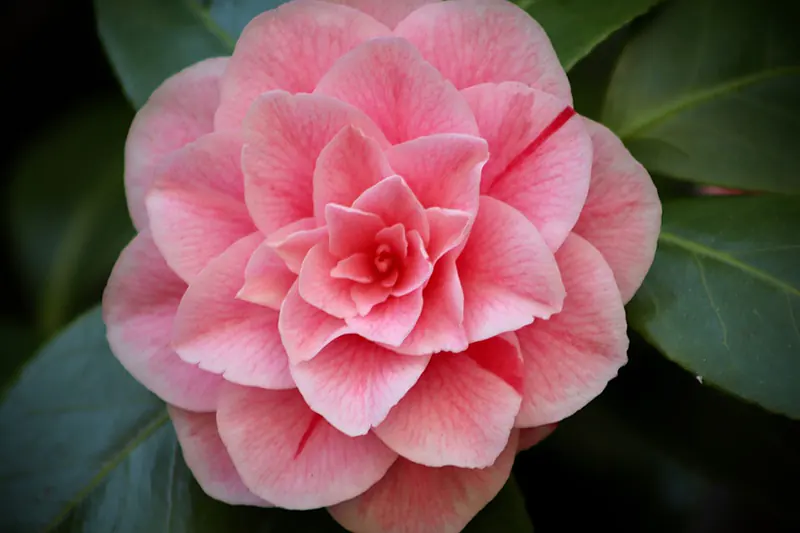
When Do Camellias Bloom?
It depends on the species and variant that you own. For example, the Japanese Camellia tree blooms in winter into spring, giving you stunning, huge flowers unless you have a small bonsai. It also depends on how much sun and water it receives during this period.
Then there are other species that love to flower from autumn into spring. If you manage to collect several Camellia species, it means you could possibly have flowers in and around your home for the most part of the year. You’ll need proper planning and care to pull that off.
Common Issues with the Camellia Tree
While the Camellia tree is resilient to most pests and diseases, that doesn’t mean it will never happen. When you grow it as a bonsai in your home, it’s more prone to issues than outside in the wild. Here are the more common problems you’ll have to check for on a daily basis.
- Vine weevils
- Moths
- Mealybugs
- Scales
- Root rot
- Yellow mottle leaf virus
- Canker
- Leaf gall
Where the pests are concerned, you’ll want to buy an organic insecticide to help you get rid of them from your bonsai. You can also remove some of them by hand if you find a way to do so safely. Personally, I leave the moths and butterflies if they want to turn into cocoons on my Camellia tree, just because I love them so much.For fungi and mold, you’re in for a struggle. While some fungicides do work, there are many times when they don’t help at all. The best thing you can do is change the conditions, such as sunlight, water, and humidity and see if it improves. If you need more help, you can check out our guide on how to revive a dying bonsai tree.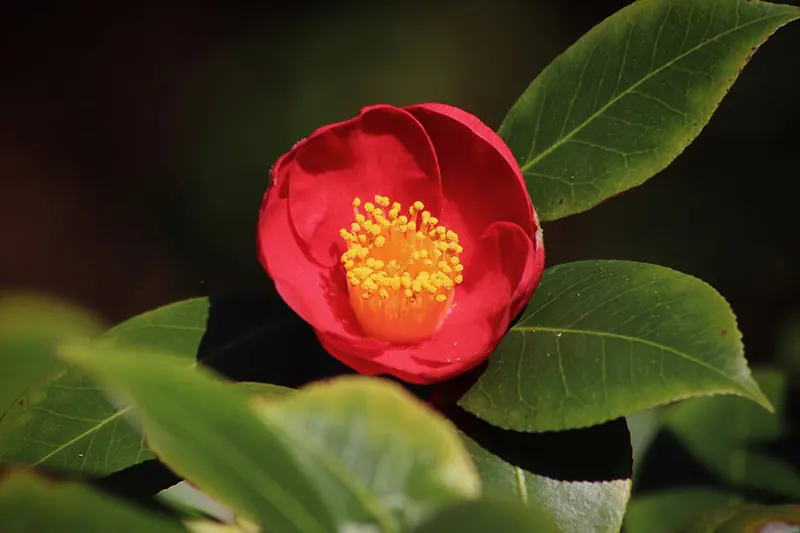
Various Ways to Propagate the Camellia Tree
If you’re like me, you’ll want to grow more Camellia bonsais for your home. There are a few ways that work, some better than others. I’m planning to air layer my Camellia soon, and I’ll share with you how to do that in the content below. I’ll also do my best to make a video on it.
Seeds
While growing a Camellia tree from seed is one of the easiest ways to propagate it, there is a slight catch. With so many variants and hybrids over the years, the seed you plant won’t be entirely true to the parent tree. You may see some differences, which isn’t a big issue if you don’t mind.
Another catch is that the seed will germinate at different times of the year depending on the location and environmental conditions. When the fruit is ripe, you can harvest it and remove the fleshy part to get to the hard pod. From there, you’ll need to crack it open carefully to find the seed.
You’ll now need to soak the seeds in water for at least 12 hours to soften the outer layer. If you simply place it in soil, you’ll have less chance of success. After soaking, place a mix of sand and peat moss in a pot before putting the seed in the mixture.
If you performed the above task immediately after harvesting from the Camellia tree, the seed will take about a month to germinate. In all other situations, you may need to wait for the next spring before you see signs of life. Once you have a well-defined tap root, make sure you pinch off the lower end to encourage fibrous root development for shallow pots.
I want to thank the American Camellia Society for providing this information, as I’ve never personally tried to grow one from seed. I shall be doing so in the near future.
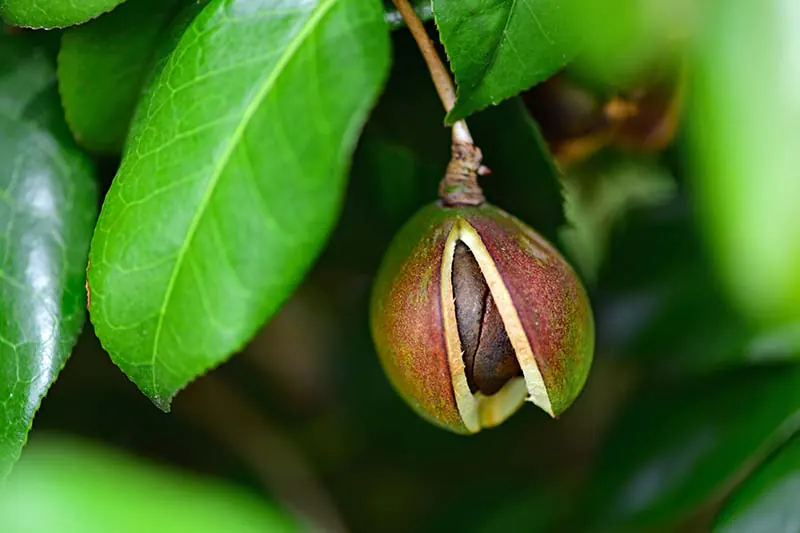
Cuttings
Another way you can propagate a Camellia tree is via cuttings, but you can’t use a traditional method. There’s a unique way you need to prepare the cutting if you want to ensure optimal success.
Firstly, you need to wait until new growth has hardened on the tree. Take a four-inch cutting from the tip, and make sure you have at least four to five leaves on it. You can remove the lower leaves if there are too many.
Before you apply any rooting medium, you need to make a slit on one side of the cutting. Using a sharp knife, make a fine cut on one side into the bark and cambium until you see white sap appear. The cut should be about an inch long from the cut end. Now, use some fungicide over the slit to prevent any diseases.
You can use a rooting hormone on the cut end to help promote root growth in the long run. Some nurseries provide a special mixture made for Camellias, but you can try the standard rooting power if they don’t have any.
Once you’ve applied the rooting medium, you can now plant it in a bonsai mixture with slightly high acidic levels. You need to make sure that the slit you made is covered by the soil and that the cutting remains in place. Wet the soil as much as possible after planting the Camellia cutting.
We recommend you place a transparent bag over the cutting unless you’ve placed it in a small greenhouse box. This will keep the soil moist and prevent you from having to spray every ten minutes as most people do. You can expect new roots to form in about 2 months, and it will be ready to move to a new pot within 8 months.
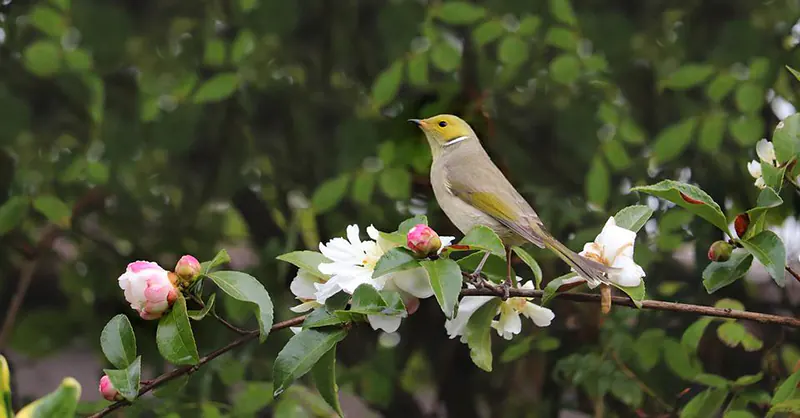
Air Layering
Air layering your Camellia tree has many benefits over the previous techniques. For one, you’ll retain the properties of the parent plant. Also, you’ll see flowering much sooner, usually within the next year.
The best time to air layer a Camellia is in early spring or winter when you see the first new growths appear. The cambium will be filled with nutrients, and the bark will be easier to remove. Measure between 12 and 18 inches from the tip of the branch so you have a decent length to work with.
From there, strip the bark and cambium layer off for about one inch in length where you want the roots to form. Removing the cambium layer will force the Camellia branch to create roots to absorb nutrients. You can clean the wood that you see after removing these layers if you wish, giving a safe space for the roots to form.
Next, take some sphagnum moss and wrap it around the opening. Make sure you wet it so the branch is inclined to form roots. You can use clingwrap from the kitchen to hold the moss in place, followed by aluminum foil. Make sure the dull side is showing outwards, as the shiny side will attract birds.
If you need to, you can use ties to wrap around either end to hold everything in place. It should take a full season for the roots to form, which you’ll be able to see through the plastic wrapping. If there are no roots by the next season, then you didn’t remove the cambium layer properly. There’s no harm in trying again if the branch is still showing signs of new leaves.
Image source
Top uses of the Camellia Tree
Europe first caught sight of the beautiful Camellias in ancient Japanese paintings, which is what drew the interest East. During the 18th century when the tea trade exploded, the British East India Company looked for new tea flavors to bring to England. It was in 1793 that new Camellia teas were introduced, and it became a popular phenomenon from then on.
The leaves of C. sinensis are popular for most teas. The seeds of C. oleifera and C. japonica are prized for sweeteners and cooking oil in some countries. As a matter of fact, China relies on these seeds as the main form of oil in the country.
Camellia oil also serves another purpose, mainly when it comes to cutting tools. Many people use it to protect and clean the blades, preserving their lifespan. The oil is also used as a form of hair care, and you may find it in some hair products in Japan.
On the medicinal side, some traditional healers use C. japonica as a way to deal with inflammation. For us at Bonsai Alchemist, we simply love the Camellia tree for its ornamental use as a bonsai. There are so many styles you can use, but we prefer to stick to formal upright.
Where to buy a Camellia Tree bonsai
If you’re lucky, your local garden store will have plenty of Camellia trees that you can choose from with different variants. However, that’s not always the case, which means you may need to look elsewhere. Here’s my top selection for where you can buy Camellias:
- Local stores: Head to your local garden store and ask if they have any Camellia trees. It doesn’t need to be a bonsai if the shop doesn’t specialize in them. You can easily prune a small tree down to size, as long as it’s not too tall. Look for short trees in black plastic bags that you can easily trim for a bonsai pot.
- Markets: In countries where Camellia trees are popular, you may find them at your local flea market. Have a look at stalls that sell plants and garden supplies, and you may be surprised by what you find.
- Online stores: If you won’t want to waste time heading to the store or market, there’s always the eCommerce option. Online stores like Amazon have a wide variety of Camellias, as long as you’re willing to pay the price and wait for delivery. Also, you have no idea what it will actually look like when it reaches you, as the images aren’t always a true reflection.
- Social media: Some of our favorite sources for Camellia trees are social media groups. You can check on Facebook for Camellia channels where you can ask people if they have any bonsais for sale. They’ll even guide you on the best way to care for them.
- Bonsai events: Keep an eye out for bonsai or Camellia flowering events in your location. Besides putting on a show, the exhibitions sometimes sell plants on the side in pots. You may be able to score a bargain, especially if the bonsai is well-developed.
- Open fields: Don’t be shy to walk around your neighborhood and investigate the open fields. In locations where Camellias are plentiful, you’ll have a chance to take some cuttings to start a new bonsai. Just make sure you’re allowed to take cuttings.
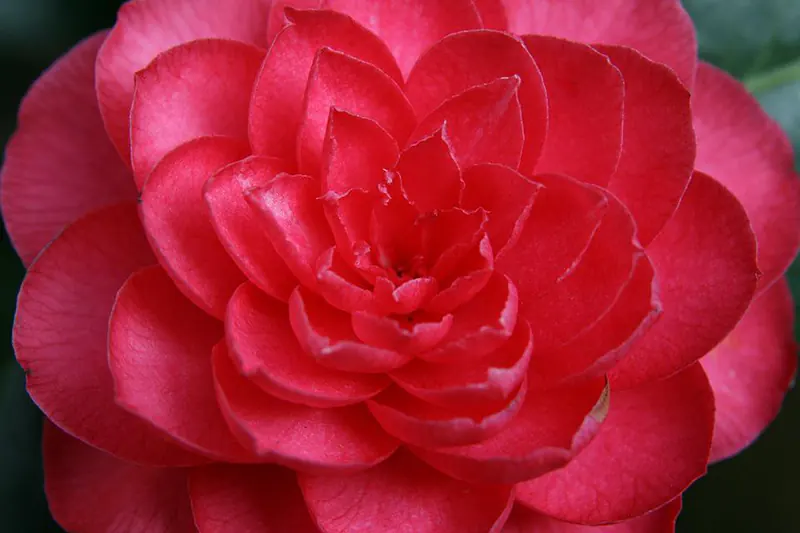
Common Questions on the Camellia Tree
This guide on the Camellia tree wouldn’t be complete without answering some of the top questions available on the internet. If we find the same questions on forums and platforms, we’ll be sure to answer you there. Please feel free to comment if there’s anything else you need to know.
Where is the best place to plant a camellia?
The ideal location for your Camellia tree is a spot where it receives sunlight during the morning and semi-shade in the peak afternoon. It doesn’t like full sunlight when it’s incredibly hot, and you may find the leaves becoming scorched. Also, you’ll want to make sure the roots and soil are in the shade so that the roots don’t overheat.
How fast does a camellia tree grow?
Most of the Camellia species grow at a slow rate, usually at 12 inches per year or less. If you’re growing it as a bonsai, you’ll need lots of patience while waiting for leaves and flowers to grow. For this reason, many people buy the plant at a mature age already instead of propagation by cutting.
Of course, the slow growth rate makes it ideal as a bonsai, as you won’t need to maintain it as much. It needs less care than faster-growing trees, and you can take your time styling and shaping the Camellia.
How do you care for a camellia tree?
We’ve already provided a detailed care guide for the Camellia tree in our guide above. In summary, it loves plenty of water and fertilizer, you’ll find flowers from autumn to winter, and you’ll want to give it shade in the hottest parts of the day. Remember also to repot your bonsai every two to three years, depending on how quickly the roots develop.
How long do camellia trees live?
Depending on the species, the Camellia tree can live for up to 200 years, if not longer. There’s one bush that’s been alive since 1347, which you can still view at China’s Panlong Monastery. Of course, you’ll need to provide the proper care for your bonsai if you want it to live that long.
You’ll also need to make sure someone’s around to look after it after you’re gone. If you don’t have friends or family that love bonsai trees as much as you do, make sure you donate it to a nursery or museum that will do the honors.
Are camellias difficult to grow?
Camellia bonsai trees are only difficult to grow if you don’t know what it needs. The main issue is the slow growth rate, which means you’ll need to have patience. Another common mistake people make is not placing it in the right conditions.
If you can give the tree all it needs to thrive, the Camellia won’t be difficult to grow. Pay attention to its leaves and flowers for any signs of pests and diseases. Above all, remember to repot it when the roots smother the soil.
What time of year do you plant camellias?
There are two factors that play a role in when to plant your Camellia tree. The first is the species, and then how hot or cold it is. The best time is in autumn or spring when it’s cool, as heat causes the tree to stress. You’ll also want it in the season when you expect new growth to appear soon.
For bonsais, both of the same rules apply. Repot your Camellia when it’s cool so that it doesn’t stress too much. Also, keep the roots wet while you prepare the new soil so they don’t dry out. It’s best to repot in early spring when new growth is visible.
Do camellias have invasive roots?
The Camellia tree has shallow, fibrous roots that form a mat near the surface. There may be one central taproot, but you can prune it back to encourage the fibrous roots to expand into the soil. It’s these shallow roots that will take up most of the pot, forcing you to replant the bonsai every two years.
You’ll also notice how the roots relate to the foliage. If you prune the branches to make more branches, the roots will also expand and extend more. It’s interesting to watch how the two work in tandem, spreading at the same rate.
Do camellias do well in pots?
Since you’re giving your Camellia bonsai so much love and care, it will thrive and grow well in a pot. You need to bear in mind that it receives more water and food than it probably would out in the wild where no one would look after it but itself. However, trees in nature know where to look for these resources.
Therefore, how well the Camellia does in a pot depends on you. If you neglect it and don’t provide the proper care, it won’t do so well. It requires your constant energy and attention to detail to survive.
Do camellias make good bonsai?
Camellias make exceptional bonsais. Just do a simple Google search for them, and you’ll see how many people love growing them in pots for their flowers and foliage. It’s one of the most loved genera to have as bonsais, and there are so many variants you can own.
Of course, you’ll have to practice loads of patience. As slow growers, you’ll spend plenty of years waiting for the branches to swell and extend. Fortunately, bonsais are meant to remain small, so you won’t have to worry about maintaining them too much.
Can you grow camellia indoors?
As we’ve already mentioned, the Camellia tree does well with semi-shade conditions. As such, it will love being indoors if you provide it with some sunlight, food, and humidity. The greatest issue with having a Camellia indoors is that you’ll have problems with mold and pests.
Indoor environments hold in the cold and air, and in many situations, there’s not enough ventilation. It causes insects to use them as food and homes for their nests. Fungi spores love to live in the dark where it’s damp and warm. It’s your duty to make sure your Camellia bonsai doesn’t succumb to these issues.
Can you grow camellia as a tree?
Even though our site mainly focuses on bonsais, you can also grow a Camellia as a tree. In most cases, they look like shrubs due to the low heights they attain. However, you can prune and train it in such a way that it reaches for the skies and looks like a tree.
As bonsais, you’ll want your Camellias to look like miniature trees. There are many styles you can apply, but we usually aim for formal or informal upright when we want them to look like trees in the wild. The slanting form is especially popular with this genus.
Do camellias like full sun or shade?
Camellias generally like semi- or partially shaded areas instead of full light. The best situation is plenty of sunlight in the morning hours, with shade for the peak afternoons. It also doesn’t like heat around the roots within the soil, so it’s a good idea to provide some ground cover in summer.

Final Thoughts on the Camellia Tree
The Camellia tree is stunning all year round, and the genus has several species you can use for bonsais. You can own a wide variety of different flowers, colors, leaves, and shapes, creating a Camellia museum if you wish. There are even societies for the genus, revealing how popular it is.
Like the Hibiscus, it’s mostly used as a tea, but we prefer to keep the leaves on the bonsai. If you have a Camellia bonsai tree at home, please feel free to comment or share your images with us on social media. We would love to see what you’ve done with yours and how many varieties you have.







